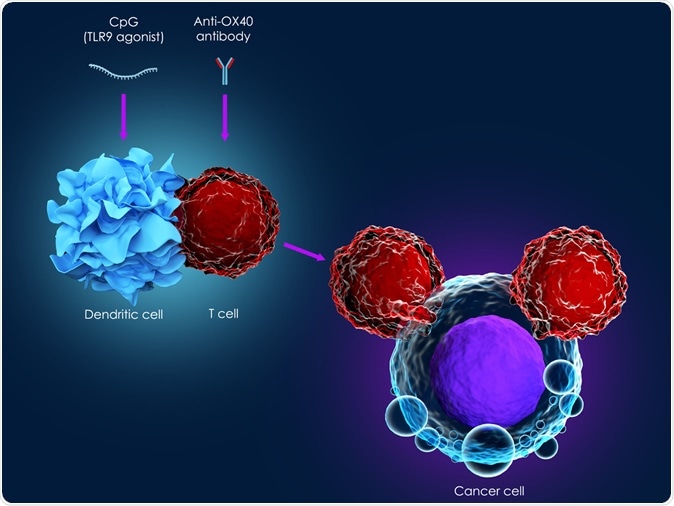
How does one decide
on delivery method of NMN (eat, sublingual, nasal drip, intravenous)
and how much, scientifically IE empirically? Clear answer is
'howsoever the doctor tells'. But what if a supplement, too early to
have experience in, be interpreted empirically! Suddenly, the answer
can only be 'as the conversation starter', factored for how smart
that person is. But what if the starter says don't know or ASK ME IN 3 YEARS! That starter
is me, and the best way then is to ape the big shot, then look at the
image and Horvath results reported by Dr. Sinclair, the big shot,
looks 40, bioage 40 at 50! Smarter than other solutions. Dr. Sinclair
mentioned name of buying company and recommended amount and dosage,
and got in to very hot legal matters. He now tells his amounts and
never discloses his supplier. Complicates my life but that is how the
cookie crumbles. To avoid problems, I have a nice disclaimer and
mention what I do! It is reporting by self with my rationality, the
answer I give may change and your troubles, then on, are yours!
The delivery method
chosen me, after sublingual methods, is intravenous. Any iv solution
must be inserted by properly accredited nurse and only be done in
extension of doctor office! Totality of my aging ingredient are
(sirtuin 1-9), parp and parp are aging targets, mtor not)
sirtuin: 1gm of
NMN/day (start with 500mg/day of iv), 1gm/day of resveratrol (finish
before pterostilbene 200 mg kicks in) [endothelial cells lining blood
path)
parp: 2gm metformin
(have diabetes, 1gm of healthspan extension I hope), 3*day acarbose
some for healthspanm extension too),
mtor (Nothing yet)
The stupidest thing
doable is greatly manipulate amounts since under amounts will not
have right response (even appreciable) and way over can be very
hurtful! Mind you, much larger doses of NMN will not hurt but is way
expensive.
That being the case,
the Pharmacokinetics of NMN is important, all the others are noise.
Rest of this note is for those competent to understand and derive
better dosing schedule.
https://www.nmn.com/news/pharmacokinetics-the-missing-metric-to-determine-dosage
Why NAD+?
Strict
Age decline, know not why, effects all cells (every body in human and
even mammals).
Liver
Function?
Key
enzymes in NAD+ signaling pathways are known to protect the
liver from fat accumulation, fibrosis, and insulin resistance, which
are related to the development of fatty liver diseases, such as
NAFLD and NASH.Raising NAD+ levels back to those of young or
lean mice has been particularly effective at preventing and
treating obesity, alcoholic steatohepatitis, and NASH, while
improving glucose homeostasis and mitochondrial dysfunction.
NAD+ boosting appears to not only improve the health of the
liver, but also increase its capacity for regeneration and protect
it against hepatotoxicity.
Kidney
Function?
Several
lines of evidence indicate that reduced levels of NAD+ in aged
kidneys are largely responsible for reduced kidney function and
resilience with age
Skeletal
Muscle Function?
Treatment with
NAD+ dramatically improves muscle function, reverses
detrimental age-associated changes in muscle by increasing
mitochondrial function, increasing ATP production, reducing
inflammation, and switching glycolytic type II muscle to a more
oxidative fiber type (Gomes et al., 2013).
Cardiac
Function?
NAD+ levels
are critical for normal heart function and recovery from injury. NMN
treatment either 30 min before ischemia (500 mg/kg, i.p.) or
repetitive administration just before and during reperfusion
provides marked protection against pres- sure overload and
ischemia-reperfusion injury, reducing infarct size by as much as 44%
(Hsu et al., 2009; Karamanlidis et al., 2013; Pillai et al., 2005;
Yamamoto et al., 2014).
Endothelial
and Vascular Function?
Cardiovascular
and cerebrovascular diseases contribute to the greatest decline in
quality of life after 65 and are directly responsible for about
one-third of all deaths (Nichols et al., 2014; Ungvari et al.,
2010). Treatment of mice with NMN (500 mg/kg/day in water for
28 days) improves bloodflow and increases endurance in elderly mice
by promoting SIRT1-dependent increases in capillary den- sity
(D.A.S., unpublished data). Thus repleting NAD+ levels in the
vascular endothelium is an attractive approach to increasing
mobility in the elderly and treating conditions exacerbated by
decreased blood flow, such as ischemia-reperfusion injury, slow
wound healing, liver dysfunction, and muscle myopathies.
Immunity
and Inmation?
There
is a growing body of evidence that NAD+ precursors can have
anti-inflammatory effects. Treatment of 24-month-old mice with NMN
for 1 week reduced the expression of inflamma- tion markers such as
TNF-a and IL-6 in skeletal muscle (Gomes et al., 2013).
Similarly, NR significantly reduced inflammation in a mouse model of
ataxia telangiectasia (AT) autoimmunity (Fang et al., 2016) and in
the muscular dystrophy MDX mouse model. NAM
has been effective in the treatment of various inflammatory skin
conditions (Niren, 2006), reduces the area of infiltration and
demyelination in experimental autoimmune encephalomyelitis mouse
models (Kaneko et al., 2006), and prevents photo-immunosuppression
and photo-carcinogenesis (Damian et al., 2008; Gensler, 1997;
Yiasemides et al., 2009).
Neuronal
Function?
Numerous
studies have reinforced the view that NAD+ levels are key to
neuronal function and survival.
In
addition to protecting damaged neurons, NAD+ precursors have
shown promise in delaying the effects of several neurodegenerative
diseases. In models of Alzheimer’s disease (AD), NAD treatment
improved cognition and synaptic plasticity in mice and rats (Gong et
al., 2013; Hou et al., 2018; Long et al., 2015; Sorrentino et al.,
2017; Wang et al., 2016). NAM increases cell viability in
a Drosophila model of Parkinson’s disease (PD) (Jia et
al., 2008), and several studies have also suggested that an NA-rich
diet both reduces the risk of developing PD and improves the
physical functioning of individuals with PD (Alisky, 2005; Fall et
al., 1999; Hellenbrand et al., 1996).NAD-boosting regimens prevent
and in some cases can reverse neuronal degeneration associated with
hearing loss, prion toxicity, retinal damage, traumatic brain injury
(TBI), and periph- eral neuropathy (Brown et al., 2014; Dutca et
al., 2014; Hamity et al., 2017; Lin et al., 2016; Vaur et al., 2017;
Yin et al., 2014; Zhou et al., 2015).
Aging
and Longevity?
Total
NAD+ levels were once considered extremely stable. Recently,
however, it has become clear that a steady decline in total
NAD+ levels over time is a natural part of life for all
species, from yeast to humans (Balan et al., 2008; Belenky et al.,
2007; Lin et al., 2004; Massudi et al., 2012; Mouchiroud et al.,
2013; Zhang et al., 2016; Zhu et al., 2015). This decline, along
with the decreased activity of NAD+ signaling proteins, is
believed to be one of the major reasons organisms, including humans,
age.
Why or why not
NR?
Key
enzymes in NAD+ signaling pathways are known to protect the
liver from fat accumulation, fibrosis, and insulin resistance, which
are related to the development of fatty liver diseases, such as NAD
and NASH. Raising NAD+ levels back to those of young or lean mice
has been particularly effective at preventing and treating
obesity, alcoholic steatohepatitis, and NAD, while improving glucose
homeostasis and mitochondrial dysfunction. NAD+ boosting appears
to not only improve the health of the liver, but also increase its
capacity for neural regeneration and protect it against hepatotoxicity.
Kidney
Function?
Several
lines of evidence indicate that reduced levels of NAD+ in aged
kidneys are largely responsible for reduced kidney function and
resilience with age
Skeletal
Muscle Function?
Treatment with
NAD+ dramatically improves muscle function, reverses
detrimental age-associated changes in muscle by increasing
mitochondrial function, increasing ATP production, reducing
inflammation, and switching glycolytic type II muscle to a more
oxidative fiber type (Gomes et al., 2013).
Cardiac
Function?
NAD+ levels
are critical for normal heart function and recovery from injury. NMN
treatment either 30 min before ischemia (500 mg/kg, i.p.) or
repetitive administration just before and during reperfusion provides
marked protection against pres- sure overload and
ischemia-reperfusion injury, reducing infarct size by as much as 44%
(Hsu et al., 2009; Karamanlidis et al., 2013; Pillai et al., 2005;
Yamamoto et al., 2014).
Endothelial
and Vascular Function?
Cardiovascular
and cerebrovascular diseases contribute to the greatest decline in
quality of life after 65 and are directly responsible for about
one-third of all deaths (Nichols et al., 2014; Ungvari et al., 2010).
Treatment of mice with NMN (500 mg/kg/day in water for 28 days)
improves bloodflow and increases endurance in elderly mice by
promoting SIRT1-dependent increases in capillary den- sity (D.A.S.,
unpublished data). Thus repleting NAD+ levels in the vascular
endothelium is an attractive approach to increasing mobility in the
elderly and treating conditions exacerbated by decreased blood flow,
such as ischemia-reperfusion injury, slow wound healing, liver
dysfunction, and muscle myopathies.
Immunity
and Inmation?
There
is a growing body of evidence that NAD+ precursors can have
anti-inflammatory effects. Treatment of 24-month-old mice with NMN
for 1 week reduced the expression of inflamma- tion markers such as
TNF-a and IL-6 in skeletal muscle (Gomes et al., 2013).
Similarly, NR significantly reduced inflammation in a mouse model of
ataxia telangiectasia (AT) autoimmunity (Fang et al., 2016) and in
the muscular dystrophy MDX mouse model. NAM
has been effective in the treatment of various inflammatory skin
conditions (Niren, 2006), reduces the area of infiltration and
demyelination in experimental autoimmune encephalomyelitis mouse
models (Kaneko et al., 2006), and prevents photo-immunosuppression
and photo-carcinogenesis (Damian et al., 2008; Gensler, 1997;
Yiasemides et al., 2009).
Neuronal
Function?
Numerous
studies have reinforced the view that NAD+ levels are key to
neuronal function and survival.
In
addition to protecting damaged neurons, NAD+ precursors have
shown promise in delaying the effects of several neurodegenerative
diseases. In models of Alzheimer’s disease (AD), NAD treatment
improved cognition and synaptic plasticity in mice and rats (Gong et
al., 2013; Hou et al., 2018; Long et al., 2015; Sorrentino et al.,
2017; Wang et al., 2016). NAM increases cell viability in
a Drosophila model of Parkinson’s disease (PD) (Jia et
al., 2008), and several studies have also suggested that an NA-rich
diet both reduces the risk of developing PD and improves the physical
functioning of individuals with PD (Alisky, 2005; Fall et al., 1999;
Hellenbrand et al., 1996).NAD-boosting regimens prevent and in some
cases can reverse neuronal degeneration associated with hearing loss,
prion toxicity, retinal damage, traumatic brain injury (TBI), and
periph- eral neuropathy (Brown et al., 2014; Dutca et al., 2014;
Hamity et al., 2017; Lin et al., 2016; Vaur et al., 2017; Yin et al.,
2014; Zhou et al., 2015).
Aging
and Longevity?
Total
NAD+ levels were once considered extremely stable. Recently,
however, it has become clear that a steady decline in total
NAD+ levels over time is a natural part of life for all species,
from yeast to humans (Balan et al., 2008; Belenky et al., 2007; Lin
et al., 2004; Massudi et al., 2012; Mouchiroud et al., 2013; Zhang et
al., 2016; Zhu et al., 2015). This decline, along with the decreased
activity of NAD+ signaling proteins, is believed to be one of
the major reasons organisms, including humans, age.
Taking any B3 supplement without betaine is likely stupid.
All of them, otherwise consume methyl, which is what betaine gives.
Why or why not NR?
Why is many factors - better control, better quality and guaranteed
quality as patent owned and manufactured only by chromadex.
Why not: 2 away from
NAD+ hence way slower, not 1 away as NMN, seems to enter cells without cleaving etc,
seems to be better than NAD+ direct or NMN but less effective on
crossing BBB although rest of body derived NAD+ does cross.
Why or why not
NAD+ or NaDH direct?
Why is that they are
direct!
Why not because
appears to be worse for iv. Tried and unsatisfied with sublingual.
NAD+ requires daily, not weekly infusion like NMN ! This empirical
fact is that NAD+ is direct in use while NMN is 1 away and may be
converted slowly and weekly is fine. One user claims that iv NMN
forces raised energy level feeling that continues full week! Assuming
that happens, NMN or better, by iv is going to be my weekly iv for
rest of life, unless MIB-626. I believe the healthspan comes from
exercise except that is a tall order for any one without brimming
energy.
Why risking self, rather than wait FDA NMN orlisten to Conboy re TPE?
my weltanschauug.








